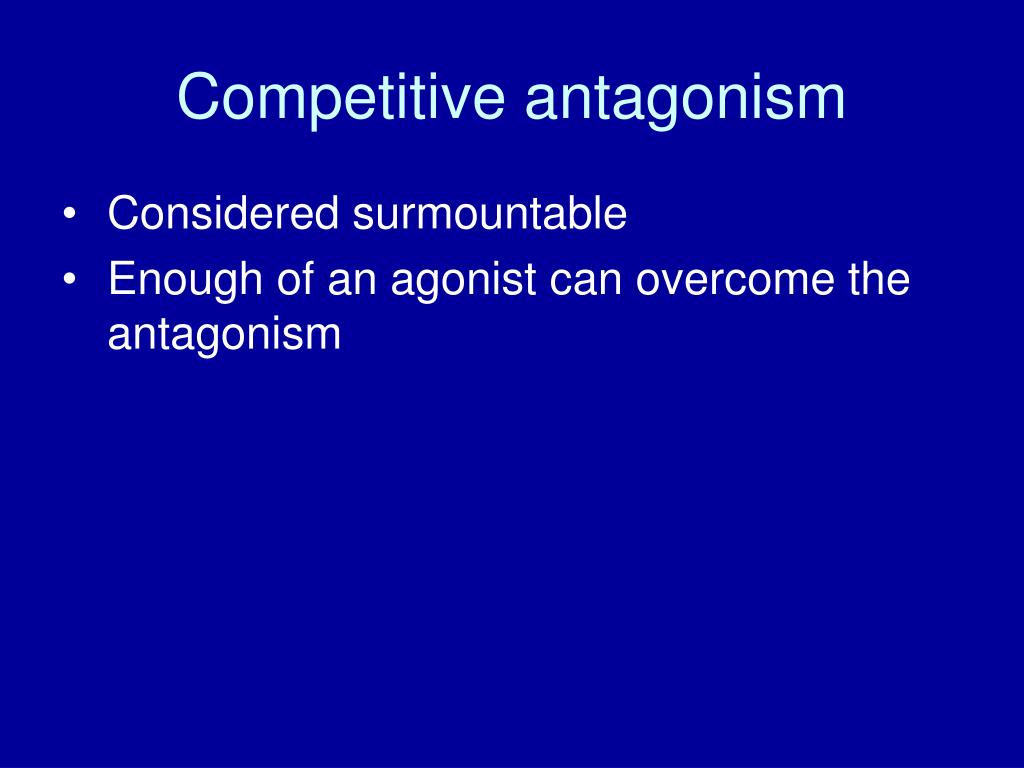

"In the presence of a fixed concentration of agonist, increasing concentrations of a competitive antagonist progressively inhibit the agonist response. The chapter in Katzung (14th ed.) doesn't so much define an agonist or antagonist, but rather describes what they do: An example is an antagonist which acts indirectly to depress the physiological parameter which the agonist stimulates.

A physiological antagonist is non-competitive, but does not have to be insurmountable.


INSURMOUNTABLE ANTAGONISM FREE
A solid free alternative exists ( Lees et al, 2004) which is in fact even more detailed, but it is written in a veterinary journal, which may be offputting to anthropocentric trainees. The best peer-reviewed reference for this is probably Barbara Pleuvry's 2004 article, but it is unfortunately paywalled by Elsevier. In case they are "also tested" at some other future juncture, this chapter might eventually become relevant. The only time this topic has ever been mentioned in the papers was in Viva 1 from the first paper of 2010 where morphine was used as a model drug for dose-response pharmacokinetics and "effect of competitive and non-competitive antagonists were also tested". One can only assume it was the topic of some of the vivas which start with "this viva will discuss dose response curves". Somehow, this fundamental topic does not seem to have ever come up in the CICM Part I written exam. This chapter is related to one of the aims of Section C(i) from the 2017 CICM Primary Syllabus, which expects the exam candidate to "define and explain dose-effect relationships of drugs, including dose-response curves with reference to.competitive and non-competitive antagonists ".


 0 kommentar(er)
0 kommentar(er)
